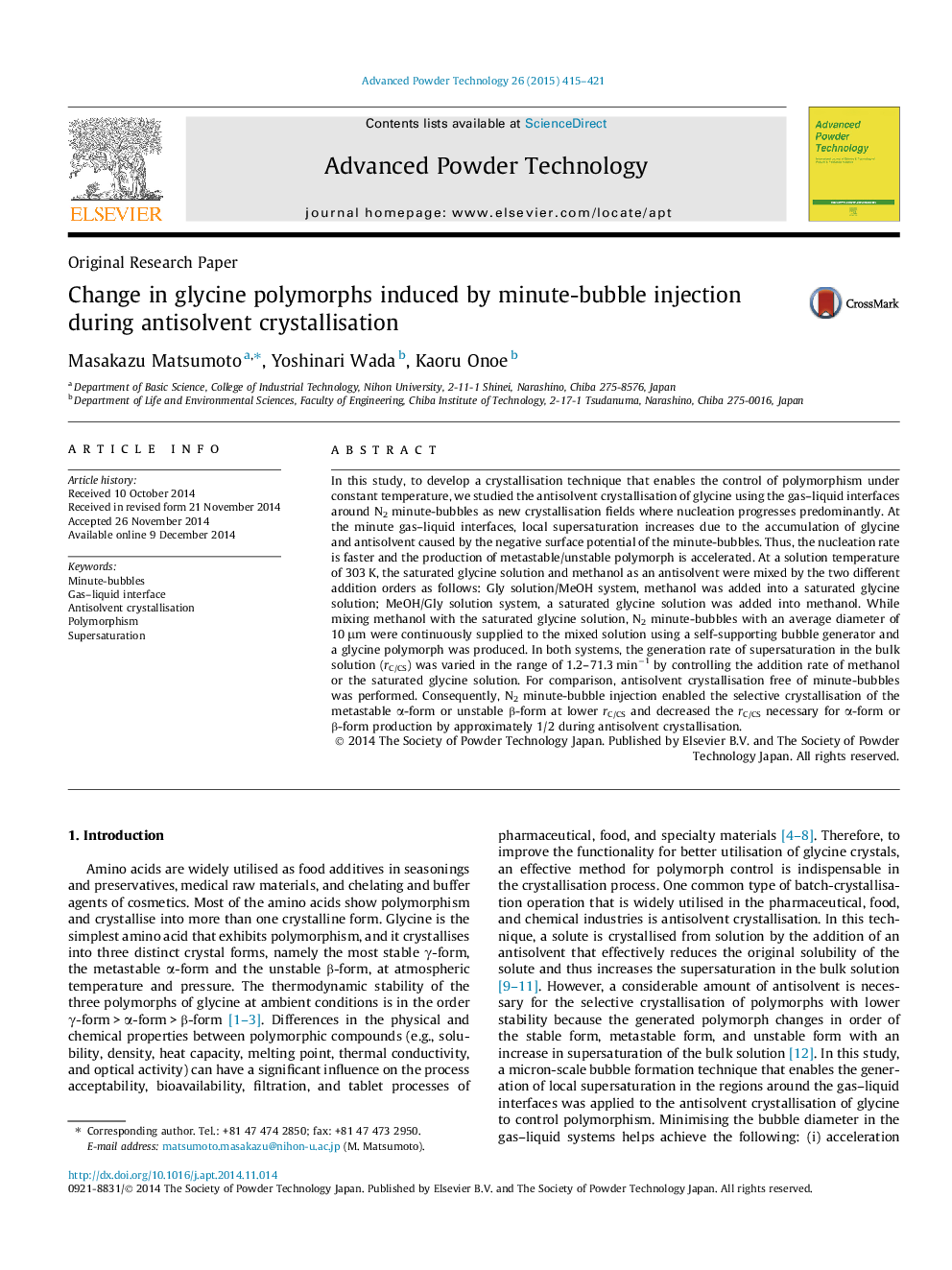| Article ID | Journal | Published Year | Pages | File Type |
|---|---|---|---|---|
| 144445 | Advanced Powder Technology | 2015 | 7 Pages |
•Glycine polymorphs change by local supersaturation at minute gas–liquid interfaces.•Minute-bubbles enable production of metastable/unstable polymorph at low supersaturation.•Minute-bubbles reduce necessary supersaturation for metastable/unstable polymorph to 1/2.•Glycine polymorphism is controllable by varying the generation rate of supersaturation.
In this study, to develop a crystallisation technique that enables the control of polymorphism under constant temperature, we studied the antisolvent crystallisation of glycine using the gas–liquid interfaces around N2 minute-bubbles as new crystallisation fields where nucleation progresses predominantly. At the minute gas–liquid interfaces, local supersaturation increases due to the accumulation of glycine and antisolvent caused by the negative surface potential of the minute-bubbles. Thus, the nucleation rate is faster and the production of metastable/unstable polymorph is accelerated. At a solution temperature of 303 K, the saturated glycine solution and methanol as an antisolvent were mixed by the two different addition orders as follows: Gly solution/MeOH system, methanol was added into a saturated glycine solution; MeOH/Gly solution system, a saturated glycine solution was added into methanol. While mixing methanol with the saturated glycine solution, N2 minute-bubbles with an average diameter of 10 μm were continuously supplied to the mixed solution using a self-supporting bubble generator and a glycine polymorph was produced. In both systems, the generation rate of supersaturation in the bulk solution (rC/CS) was varied in the range of 1.2–71.3 min−1 by controlling the addition rate of methanol or the saturated glycine solution. For comparison, antisolvent crystallisation free of minute-bubbles was performed. Consequently, N2 minute-bubble injection enabled the selective crystallisation of the metastable α-form or unstable β-form at lower rC/CS and decreased the rC/CS necessary for α-form or β-form production by approximately 1/2 during antisolvent crystallisation.
Graphical abstractFigure optionsDownload full-size imageDownload as PowerPoint slide
